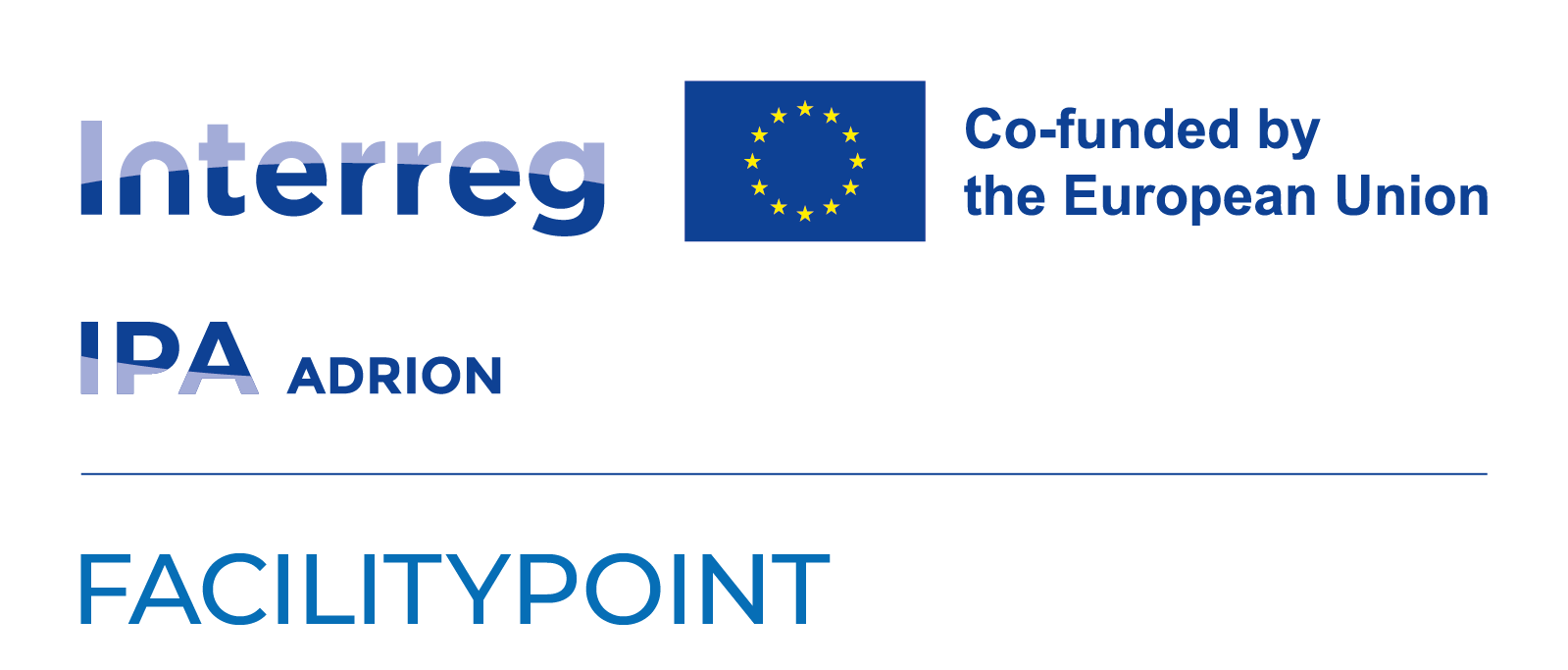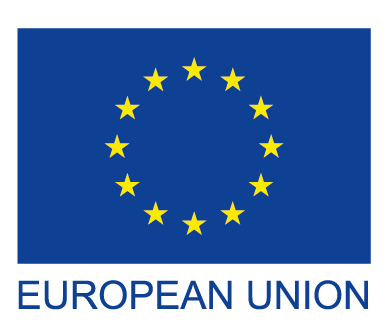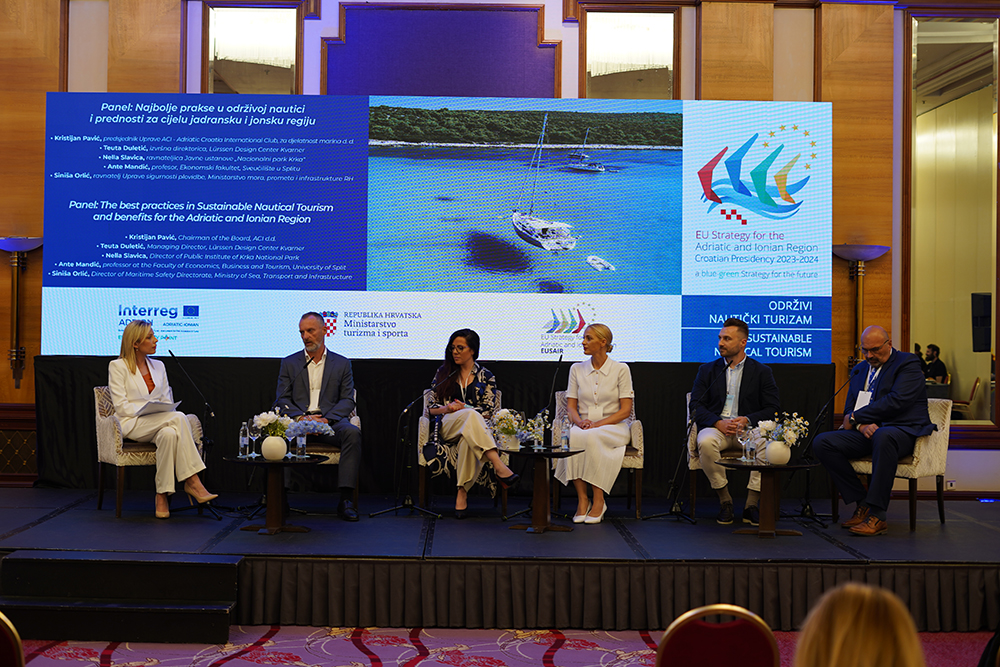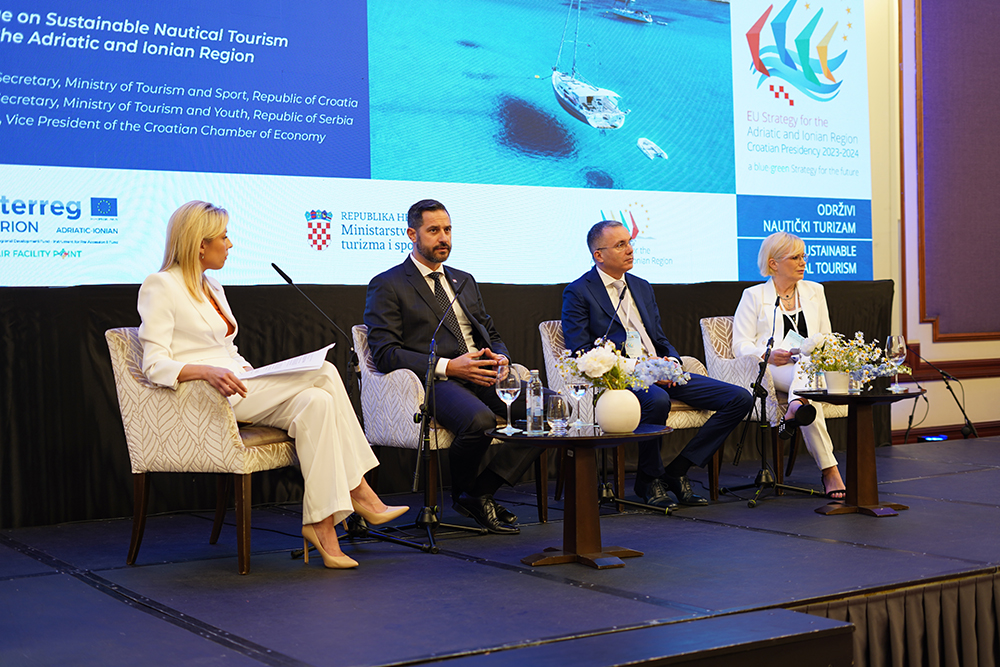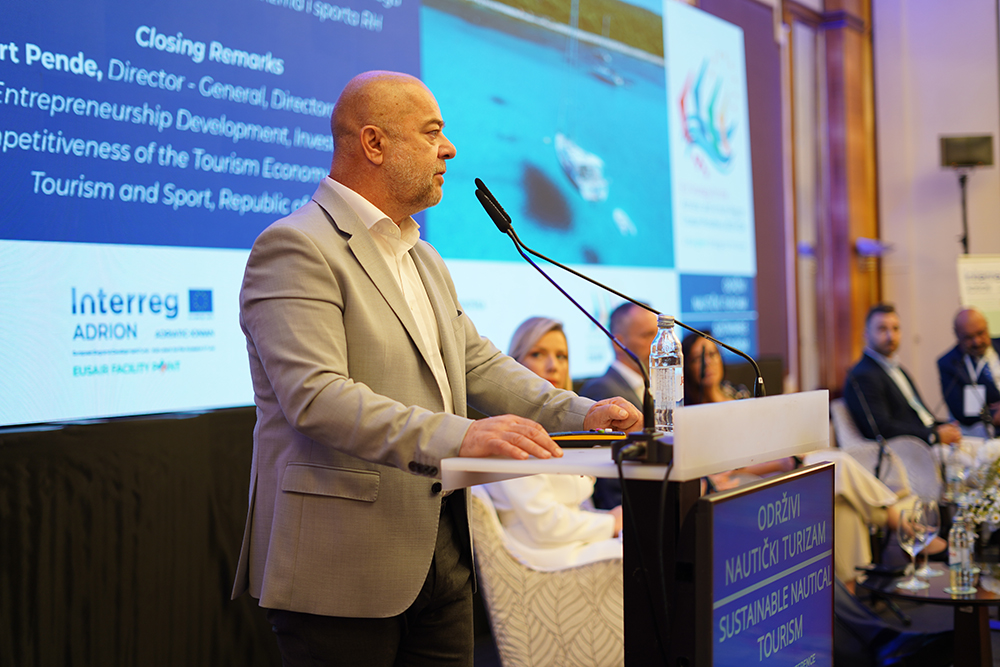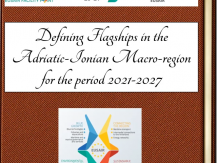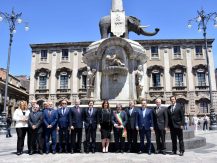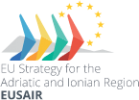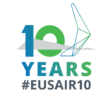Towards Sustainable Nautical Tourism Of The Adriatic Ionian Region
Adriatic-Ionian region is rich in seas, but also inland waterways - rivers and lakes, and they are becoming an important tourist resource. Due to the increased pressure on these natural resources, the importance of their protection and preservation and the need to establish green infrastructure capacities and sustainable management models in nautical tourism are becoming a priority of regional public tourism policies. That is why cooperation in the area of the entire Adriatic-Ionian region is important, and in addition to events such as the EUSAIR conference on sustainable nautical tourism.
The Adriatic-Ionian region is rich in seas, but also inland waterways - rivers and lakes, and they are becoming an important tourist resource. Due to the increased pressure on these natural resources, the importance of their protection and preservation and the need to establish green infrastructure capacities and sustainable management models in nautical tourism are becoming a priority of regional public tourism policies. That is why cooperation in the area of the entire Adriatic-Ionian region is important and in addition to events such as the EUSAIR conference on sustainable nautical tourism.
The EUSAIR conference on sustainable nautical tourism in the Adriatic-Ionian region was held on June 21, 2023 in Zagreb, and was attended by Tonči Glavina, State Secretary in the Ministry of Tourism and Sport of the Republic of Croatia, Uroš Kandić, State Secretary in the Ministry of Tourism and Youth of the Republic of Serbia, Mirjana Čagalj, vice-president of the Croatian Chamber of Commerce and Zrinka Marušić from the Institute for Tourism, while the panel within the conference "Best practices in sustainable nautical tourism and benefits for the Adriatic-Ionian region" brought together the most relevant speakers from the nautical sector, among whom were Kristijan Pavić, President of the Management Board of ACI d.d., Teuta Duletić, General Director of Lürssen Design Center Kvarner, Nella Slavica, Director of the Krka National Park Public Institution, Ante Mandić, Professor at the Faculty of Economics, Business and Tourism at the University of Split and Siniša Orlić, Director of the Maritime Safety directorate in the Ministry of the Sea, Transport and Infrastructure.
According to studies by the European Commission and the OECD, Croatia is one of the first countries to start establishing systematically measurable indicators of sustainable tourism. However, there is no unique methodology that would measure the carrying capacity of the entire Adriatic Sea, this is yet to be developed.
Croatia has the largest charter fleet in the world with over 5,000 charter boats and is also the most preferred destination for charter guests on global search engines for charter boat rentals. According to the survey "Attitudes towards the consumption of charter’s boaters in Croatia in 2022" conducted by the Croatian Institute for Tourism for the needs of the Ministry of Tourism and Sport, charter boaters and guests come to Croatia primarily for the beauty of nature and landscape and 62% of them continue to release brown and black tanks into the sea, which directly affects the main reason for their arrival - nature. This is no longer just a consequence of the lack of infrastructure but of the information, awareness and attitudes of charter boaters and guests. It is important to work more intensively on positive changes in that area as well.
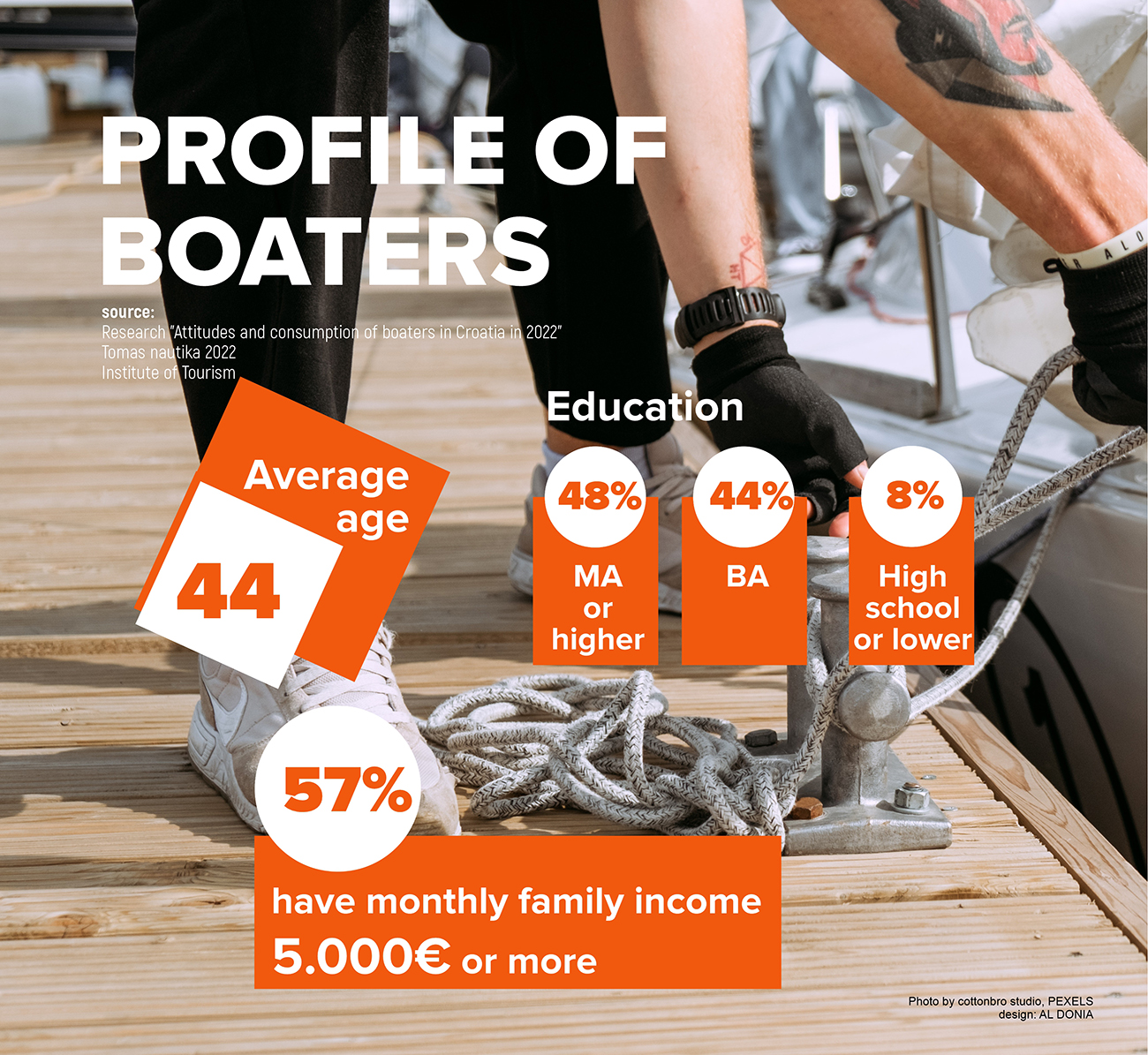
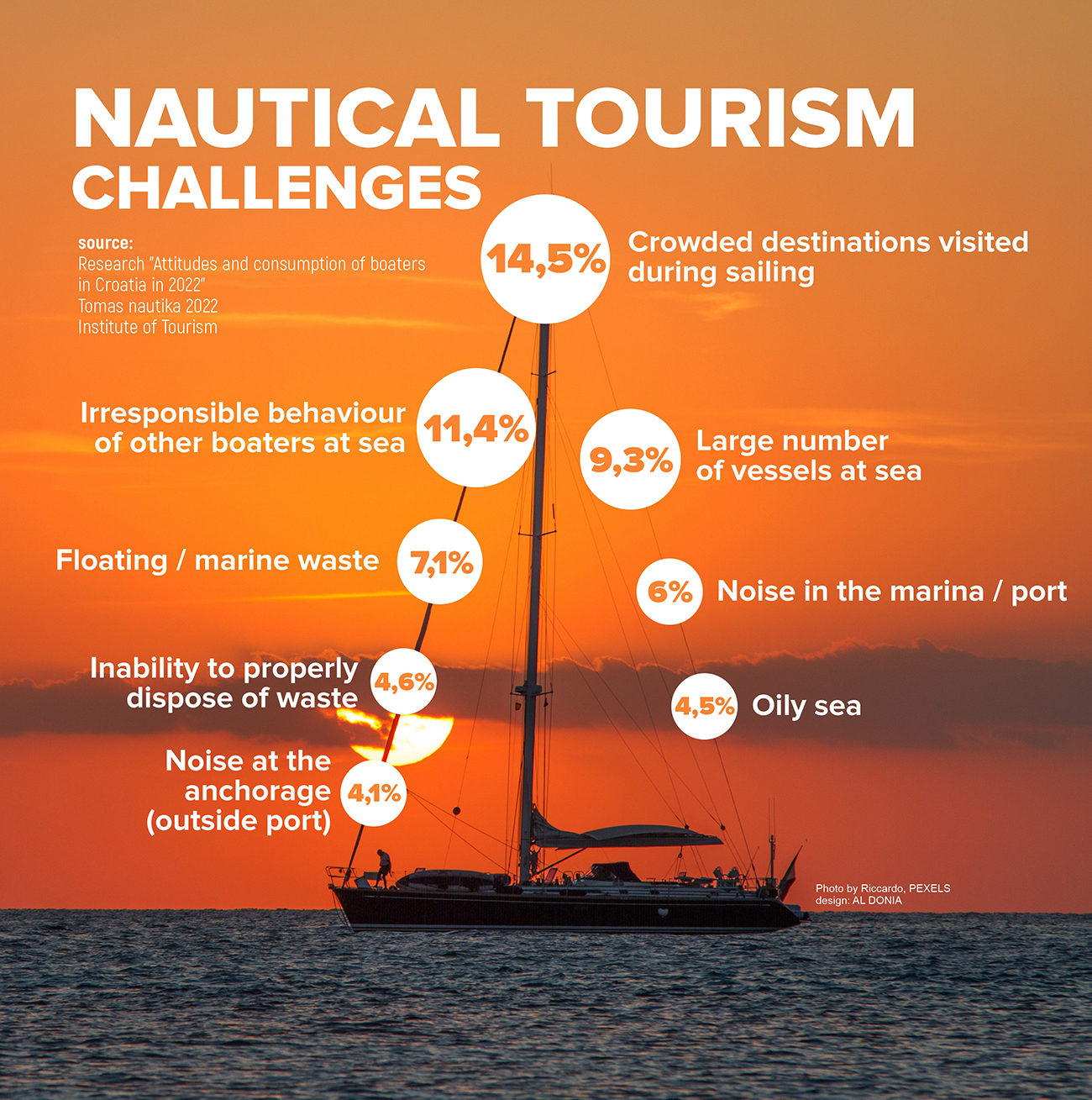
“Through the new Tourism Law, we will improve the framework for encouraging investment in tourism, and for the first time, a special grant framework for supporting sustainable nautical development will be created. Projects in tourism with high added value will be encouraged, which, among other things, include the charter fleet as well as activities accommodation of guests on nautical tourist boats for one-day and longer trips. In order to reduce greenhouse gas emissions from tourism, the decarbonization of the tourism infrastructure and the green transition of the tourist fleet will be ensured. For the first time, it will be possible to use subsidies for the charter fleet and renewal or purchase of clean vehicles or vehicles with zero emission rate. It will also be possible to invest in marinas, especially receiving capacity for black tanks in marinas,"Croatian Minister of Tourism and Sport Nikolina Brnjac said in her keynote address at the conference.
Examples of good practice also come from the majority of ACI marinas, Mediterranean leading marina operator. ACI marinas are increasingly introducing the most advanced technological solutions, when it comes to sustainability, waste management, the use of renewable energy sources and the preservation of the sea and coasts. The most advanced in this sense will certainly be the ACI Marina Rijeka, whose opening is expected soon Examples of good practice also come from Croatian protected areas such as national parks or nature parks through developing and implementation of sustainable management plans for these areas.
Serbia, on the other hand, is making progress in use of the potential of river cruising on the Danube. According to the data presented at the conference, 30% of the world's cruising takes place on the Danube contributing to the development of continental tourism in the countries through which the Danube flows. Until a few years ago, cruising on the Danube ended in Budapest. Serbia is making better use of its 588 navigable km along the Danube, through acquiring ecological catamarans and developing the offer by building links among cultural and active cyclotourism offers with cruising tourism into a unique tourism product. At the conference, the project "Sail Serbia 2023" was presented in more detail.
The conference was closed by Robert Pende, director of the Directorate for the Development of Entrepreneurship, Investments and Competitiveness of the Tourism Economy in the Ministry of Tourism and Sport of the Republic of Croatia with inviting the participants to be a role models for sustainable nautical tourism in Adriatic Ionian Region.
